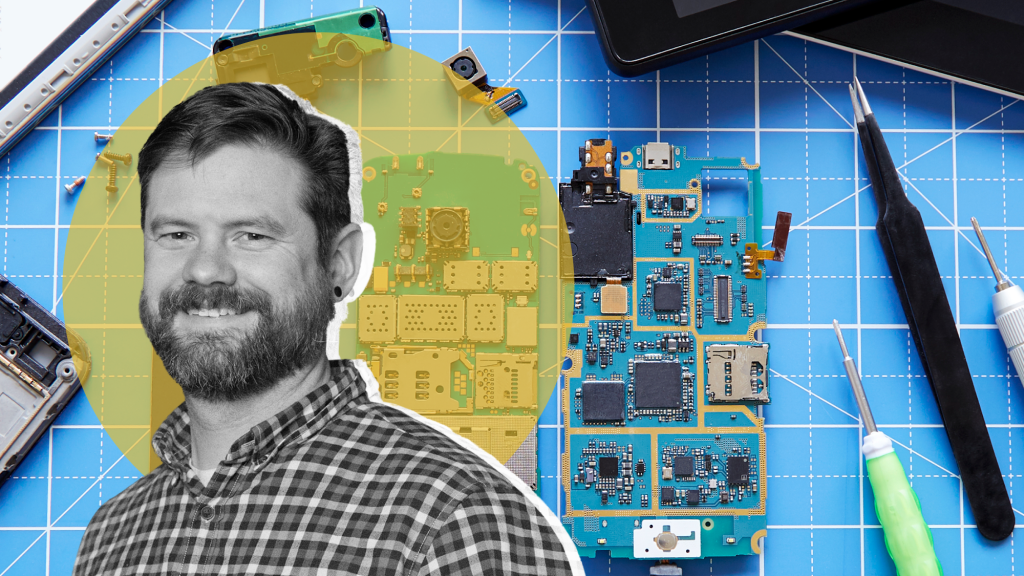I've spent an inordinate amount of time recently, fielding calls from media outlets curious about my thoughts on Apple’s latest announcement regarding a federal Right to Repair. To put it succinctly, it’s a masterstroke in public relations, but fundamentally, it’s smoke and mirrors. Here's why.
What's in it for Apple?
Apple has leveraged its considerable influence, particularly in California, to circumvent even stricter limitations being proposed in other states—limitations aimed at challenging Apple’s controversial “parts pairing” practices. This strategy has been a death knell for independent repair businesses and consumer DIY efforts.
Under Apple’s current terms, you must provide your device’s IMEI (serial number) directly to Apple to even purchase a part. This makes it impossible for independent repair shops to stock parts for future repairs, negating any convenience of same-day, local repairs. To put it in perspective, getting one’s rosary beads blessed by the Pope is simpler than this.
The new California law conveniently sidesteps the issue of parts pairing and does not mandate Apple to facilitate the use of genuine, used parts as replacements. It leaves the third-party parts market in a perpetual state of limbo, thereby empowering Apple to dictate pricing.
A Saga of Control
Once you get the part, your ordeal isn’t over. The part will not function without another interaction with Apple to “activate” it. For rural residents like myself, often without high-speed internet, this is a glaring oversight. Are we saying low-income or rural individuals don’t deserve the right to repair?
Why Not Federal Law?
Since 2010, we've been rigorously investigating the most effective avenues for enacting repair-friendly laws. Through direct consultations with the Federal Trade Commission (FTC) and the Department of Justice (DOJ), it's become clear that states hold the constitutional reins over General Business Law. These are the same statutes that protect consumers from fraud, like lemon laws, and they can be leveraged to guard against Unfair and Deceptive Acts and Practices (UDAP).
Our research into End User License Agreements (EULAs) led us to present our findings to the FTC. The takeaway? Any product sold with a mandatory EULA is, by definition, engaging in deceptive trade practices. Original Equipment Manufacturers (OEMs) do not require EULAs to safeguard their intellectual property; instead, these agreements strip consumers of their well-established federal rights to repair. Since EULAs are often non-negotiable and sometimes even inaccessible for review, the consumer deception is blatant.
However, the limitations of federal agencies go beyond Apple. Both the DOJ and the FTC are structured to enforce violations against one OEM at a time. To grasp the enormity of this enforcement challenge, consider that the Consumer Technology Association (CTA) has 1,700 members. Using a fishing analogy: even if federal agencies were to snag a whale (like Apple), 1,699 other fish would elude capture. Given the time-consuming legal processes, we're looking at a Sisyphean task that would take 1,700 years to complete. Clearly, broader statutes and quicker enforcement mechanisms are essential.
Apple is fully aware of the forthcoming state laws that will close loopholes like "parts pairing." They argue against a patchwork of state laws, claiming it would be unmanageable. However, our template legislation, which has been introduced in 45 states, aims to be as non-intrusive as possible on manufacturers—so much so that we've been criticized for being "too light."
Lastly, Congress has a critical role that only it can fulfill: addressing outdated Copyright Law limitations originally designed to combat illegal VCR tape copying in the mid-'90s. The U.S. Copyright Office itself is seeking relief from the monotonous triennial hearings on the legality of breaking digital locks for repair purposes. Except for specific cases like computer gaming stations, all repairs are legal, but current laws inhibit the provision of necessary tools.
The Ongoing Battle
As we soldier on in our state-level advocacy, it's worth noting that the landscape is shifting strongly in our direction. While the exact number of additional laws required to tip the scale remains uncertain—be it 5 or 15—what is clear is that the opposition from most Consumer Electronic OEMs is waning. Several major brands have already taken proactive steps to improve parts distribution and customer support, changes that are likely to have a national ripple effect, irrespective of federal law.
But it's crucial to understand that the arena of this struggle is expanding. The Right to Repair movement is no longer confined to just smartphones or laptops; it's encompassing a broader array of products. Whether it's machinery used in agriculture, industrial equipment, marine engines, or even as specific as medical equipment and petite wristwatches, the fight remains the same. What changes are the dimensions and complexity of the products involved.
So, what does this mean for our ongoing efforts? It signifies that our advocacy must adapt to meet these evolving challenges. We must diversify our strategies to tackle the different facets of digital monopolization affecting not just consumer electronics, but our daily lives at large.
Our template legislation, introduced in more than 40 states, serves as a foundational step. But we must push for more comprehensive laws that take into account this expanding battleground. We'll need to engage with experts across these various sectors, build coalitions, and most importantly, continue to raise public awareness about why the Right to Repair is everyone's right, regardless of what you're looking to fix.









